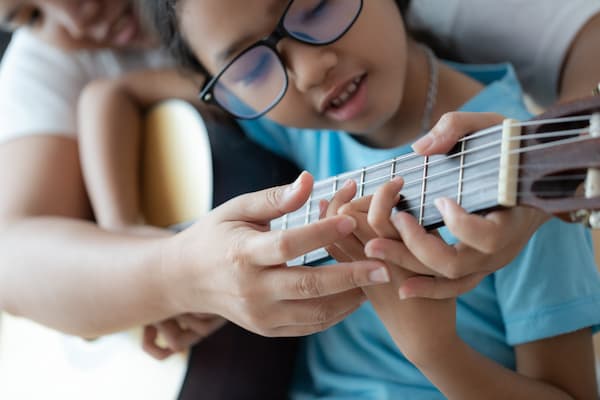No matter how old you are, listening to or even looking at a guitar can make you want to grab it and start strumming! As the second most popular musical instrument (after the piano), the guitar features a wide variety of chords and possible strumming patterns. It is one of the most versatile and recognizable instruments ever invented. In fact, this is what has led to the guitar being so popular! You can’t really lug around a piano, can you? With a guitar, you just strap it to your back and go where the wind (and music) takes you.


When deciding what type of guitar to play, it is important to consider the individual’s experience level, preferences, and goals. Acoustic guitars are a great choice for beginners, as they are relatively easy to learn and require no additional equipment. Electric guitars are more versatile when it comes to genres of music but can be intimidating for some beginning players due to their complexity. The size of guitar that will be most comfortable for the individual should be considered. A full-sized acoustic or electric can be difficult for smaller adults and children to play comfortably, so a ¾ size may be a better choice.
Another factor when selecting a guitar is budget. Models widely vary on price. While it is generally not recommended to buy a “cheap” beginner guitar, they are available when finances do not permit one of better quality. In addition, acoustic-electric guitars provide the best of both worlds: the ability to plug into an amplifier if desired, while still having the option of playing acoustically in quieter situations.
Standard guitar tuning are the notes, E-A-D-G-B-E.
There are various types of guitars: acoustic, bass, classical, folk, 12-string, double-necked, and electric are amongst the most popular.
A strap is required for those playing while standing. A good-quality strap will keep the guitar stable. It is best to choose a wide strap with some padding for best fit and comfort.
In general, uncoated strings can last roughly one to two months. For coated strings, players report wildly different time intervals between string changes, but certainly much more prolonged than uncoated strings.
As for why all guitarists do not use coated strings, the reason is tone; some players detest coated strings because they dislike their sound. Others love them for their tone as well as their longer life.
Coated strings are more expensive but last longer. For those who hate replacing their guitar’s strings, coated might be the best option for them, particularly if they happen to have many guitars. It is important to wipe the strings regularly while playing, especially in a hot environment when hands are sweaty.
For beginners just learning to play the guitar, their fingertips are likely to be soft. When fretting a single note or a chord, the string will sink into the flesh of the fingers. When this happens, another part of the finger may be contacting another string. Over time, as players develop calluses, this occurrence becomes less likely, and the strings will not impact the fingers as they did when first playing.
Another reason for finger pain while playing is that the fingers are not angled properly as they contact the guitar strings. If they are leaning over rather than straight up and down, they will touch an adjacent string.
When all else fails, another guitar that offers a wider fretboard might be a better option for the player. This is not very common but may need to be considered.
Before taking such drastic action, it is best to consult the guitar instructor who will confirm if the fretting hand and fingers are correctly positioned.
With the school being conveniently located in Orange Park, it is just a short drive for our students from Fleming Island, Green Cove Springs, Oakleaf, and Jacksonville.
For those who are not local, virtual lessons are also available.